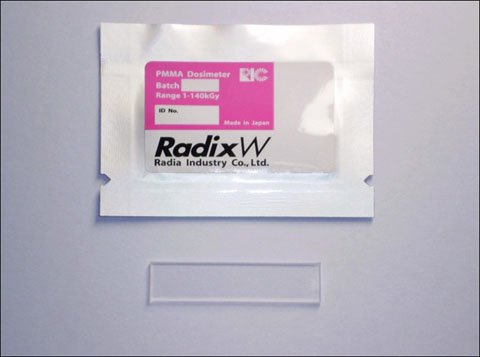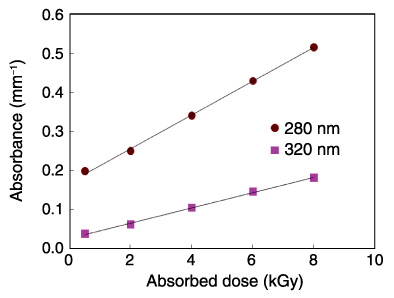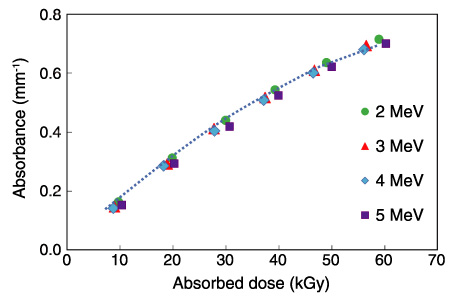
Fig.12-23 Clear polymethylmethacrylate (PMMA) dosimeter, Radix W

Fig.12-24 Dose-response curves of Radix W for different readout wavelengths

Fig.12-25 Dose-response curves of Radix W for electron beams
Many medical and healthcare products are sterilized by ionizing radiation. The completion of sterilization is evaluated by measurement of the absorbed dose in products. Insufficient irradiation of the products may have a harmful influence on our health. In the radiosterilization process, the dose value required to complete sterilization is determined using the initial number of bacteria in the products before irradiation. Such dose values range from 1 kGy to several tens of kGy. Reliable dose evaluation over a wide range is therefore important for the quality assurance of irradiated products.
Radix W, a clear polymethylmethacrylate (PMMA) dosimeter based on radiation-induced coloration, is currently used in cobalt 60 γ-ray processing (Fig.12-23). However, its response at a dose range of less than 10 kGy is low and leads to measurement error. Therefore, the dose-response characteristics of Radix W were studied at readout wavelengths of 270∼320 nm to improve the measurement accuracy. As shown in Fig.12-24, the dose response for 0.5∼10 kGy at 280 nm was higher than that at the conventional wavelength of 320 nm. A wide dose range of 0.5∼150 kGy can be measured with high accuracy using only a Radix W dosimeter, employing two readout wavelengths of 280 nm and 320 nm.
However, thin-film dosimeters with thicknesses in the range 10∼100 μm have commonly been used in electron-beam (EB) processing with dose rates higher than that used in γ-ray processing. The thin-film dosimeters are not uniform in thickness and are difficult to handle. The characteristics of the Radix W dosimeter, having better uniformity in terms of thickness (diameter), were studied for MeV electron beams. The dose-response curves resulted in one line, independent of the electron energy, in the range 2∼5 MeV (Fig.12-25). The Radix W dosimeter can also be applied to electron-dose evaluation.
These results demonstrate that only one kind of dosimeter, Radix W, is useful for routine process control in both γ-ray and EB processing.
The published paper from this study is cited in the international standards on the regulation of dosimetry performance (ISO/ASTM51276), and contributes to quality control in radiation processing with higher reliability.